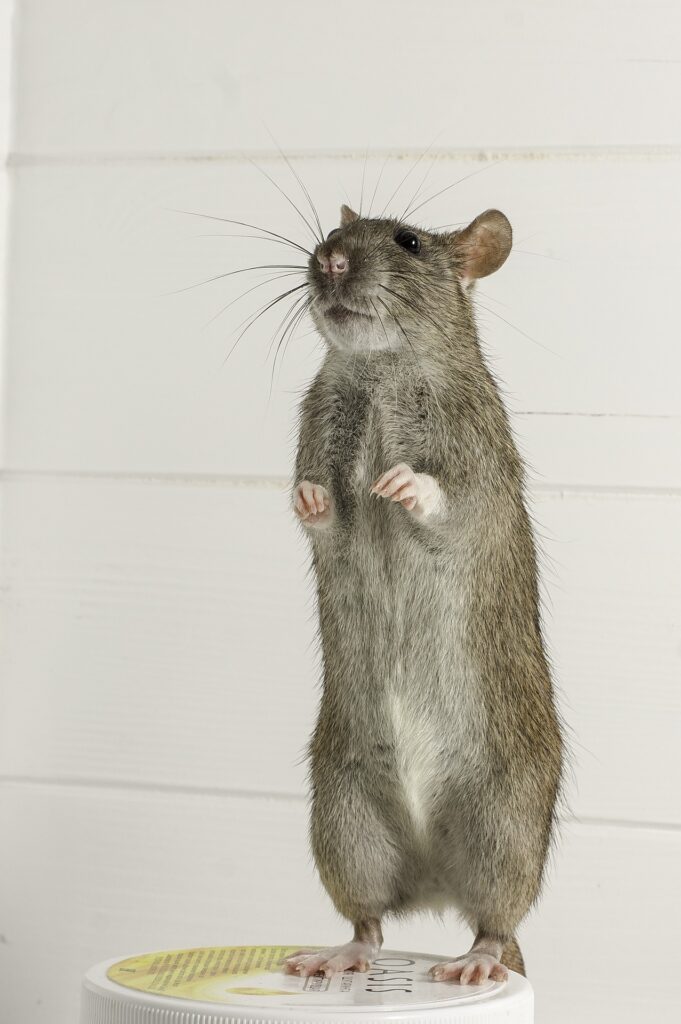
Is That A Rat or A Mouse and Why It Matters
You’ve found all the indicators and you’ve validated it– there’s a rodent in your home. Is it a rat or a mouse? Does it actually matter? Just how can you tell? There are substantial differences in rat vs mouse, it can be difficult for the average property owner to differentiate when comparing the 2. The behavior, diet, and environment of each of these rodents affects how they are removed and prevented. Proper identification is necessary for efficient rodent control.
There more than 70 types of mice and rats in the United States. The most common are the Norway rat, the roof rat, and the house mouse. Let’s have a look at the contrast between rats and mice and why it matters.
Habits:
Mice are curious and will investigate anything new they encounter. As a result of this, you can put set mouse traps directly in their path. Mice can stand on their hind legs when they are supported by their tails. They are exceptional jumpers, swimmers and climbers and are incredibly fast runners. Mice are nocturnal and most active from dusk up until dawn. They do not like bright lights.
Rats are a lot more cautious than mice. They will avoid new things until they get used to them being there. Because of this, unset traps need to be placed in their path initially to allow them obtain utilized to them and then changed with set traps later on. Rats are powerful swimmers and will typically stay in drains, enabling them to enter structures via broken drains and toilets. They will climb to reach food, water, and shelter. They follow regular regimens and paths daily.

Look:
House mice are a lot smaller sized than their rat cousins. They have tiny heads, tiny feet, pointed snouts, and big ears with some hair on them. They are usually light brown in color with some grey shading and dark tails. Their droppings are shaped like tiny rods.
Norway rats have hefty, thick bodies. They are the biggest of the three common rodent species. They have blunt noses and short ears with dark hair. They are normally brown with black shading and shaggy coats. Their tails are dark on top and pale underneath. Their droppings are shaped like pills.
Roof rats have light slim bodies. They have pointed snouts and long ears with no hair. They are typically gray in color with black shading and smooth coats. Their tails are dark. They have droppings formed like spindles.
What They Eat:
Mice prefer cereal grains and plants however they will feed upon practically anything.
Rats will consume almost anything, also, but prefer fresh grain and meat. Rats also need 1/2 to 1 ounce of water a day to survive.
Environment:
Mice like to nest near their food sources. They will use any soft material or shredded paper to construct their nests.
Rats will burrow under structures, along fencings, and under plants or debris. Norway rats commonly stay in these burrows while roof rats prefer to nest in walls, attics, and trees.

Breeding:
Mice will have up to 10 litters annually and usually live from about 9 to 12 months.
Norway rats will have up to 6 litters each year and live 12 to 18 months.
Roof rats will have up to 8 litters per year however have fewer babies in their litters than Norway rats do.
Fun Facts:
The house mouse is considered among the top 100 world’s worst intruders. They are afraid of rats because rats will eat them. Mice are also color blind.
Rats are nocturnal and have bad eyesight. Norway rats and roof rats do not get along and will in fact battle each other to the death. Norway rats have a tendency to live on the lower floors of properties while roof rats will live on the top floors.
Why Does It Matter:
Why does it matter whether you have a rat or a mouse? Both rat and mice droppings contain pathogens that are hazardous to humans. Both are also very good at breeding and increase their populations quickly, making them harder to manage. The significance in correctly identifying rats vs mice influences just how they are controlled and exterminated. Since they each have such different eating habits, habitats, and behaviors, different techniques are employed when it concerns getting rid of mice and rats. What may work for house mice may not work in controlling rats and the other way around.
If you have an issue with rodents or any other pests, contact a professional pest control service provider who can not only properly identify the nuisance pest, but also set you up with the appropriate treatment and continuous prevention plans.
More Rodent Articles
Quick Links
Take The First Step - Get Rid of Rodents For Good!
© 2020 Bug Pro Pest Control
- Emergency Contact: (833) 755-0815
